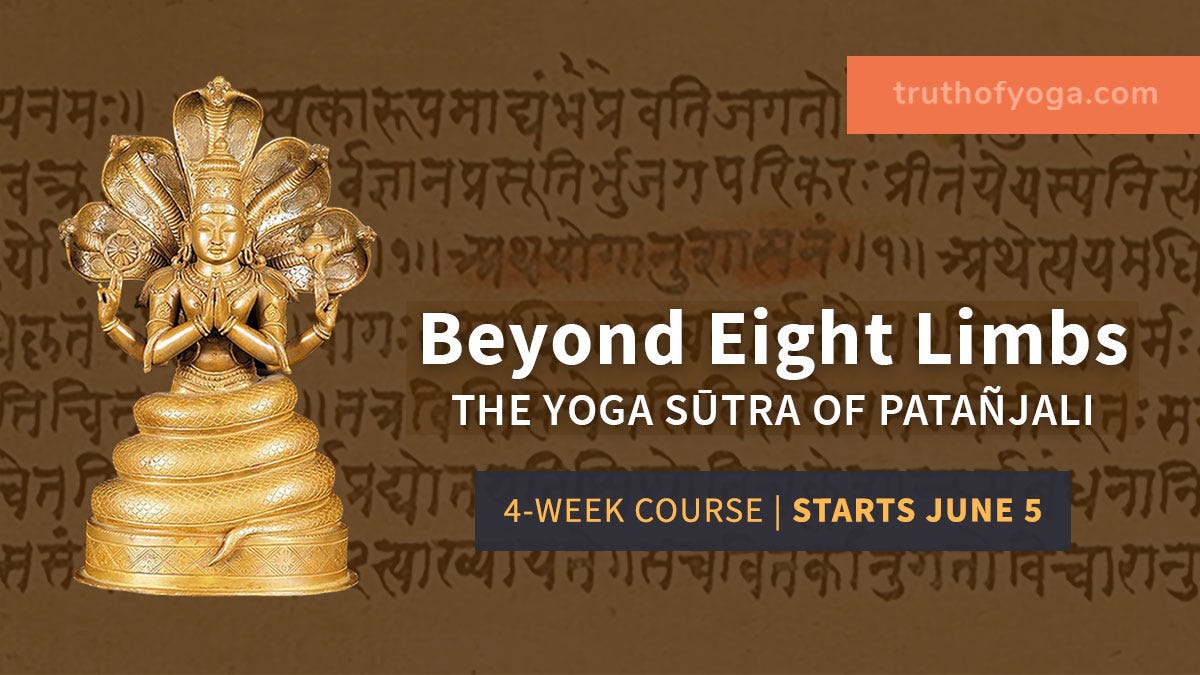New Light on Yoga
How history and philosophy illuminate practice...
The following article was written for Dipika, the magazine of Iyengar Yoga London. Its title comes from a Sanskrit word for “light” – as in the Haṭha Pradīpikā, a medieval compilation shining “light on physical yoga”. However, as the article notes, the main technique for most of yoga’s history was seated meditation, not sequenced postures.
To explore how its philosophy works, join me online for a comprehensive guide to the Yoga Sūtra – a text that’s widely quoted, but less often understood.
Find out more about other courses on texts and traditions at truthofyoga.com.
A Little Philosophy Goes a Long Way
By Daniel Simpson
When I’m asked what I do, I keep it simple: “I teach yoga philosophy.”
One common response is a look of confusion, as if people aren’t sure if that’s really a thing. “How interesting,” they might reply, before changing the subject.
If you stop a random stranger and ask what yoga means, they’ll almost certainly talk about postures. Classes based on sequences of āsanas are found in cities all over the world, from San Francisco to Shanghai. But they are a relatively recent phenomenon. The earliest recorded example dates from 1918. Before that, most Indian yogis were full-time renouncers, not busy suburbanites.
Keep reading with a 7-day free trial
Subscribe to Ancient Futures to keep reading this post and get 7 days of free access to the full post archives.


